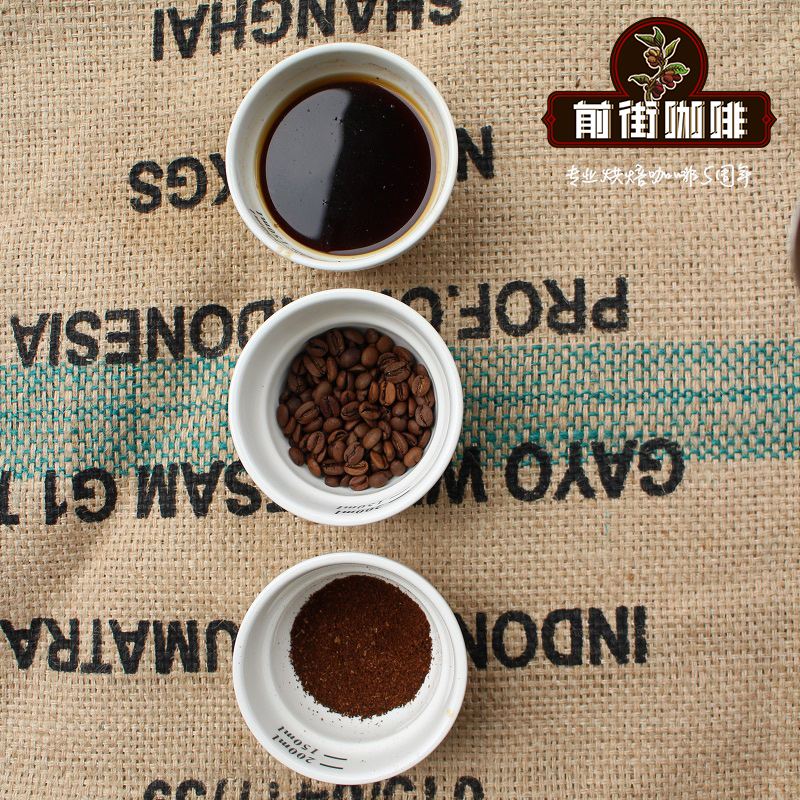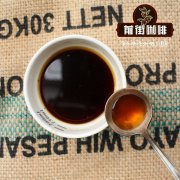Jamaica Blue Mountain Coffee Flavor Taste Description Where is Blue Mountain Coffee grown

Professional coffee knowledge exchange more coffee bean information please follow the coffee workshop (Wechat official account cafe_style)
You may not know where Jamaica is, but you must have heard of the famous Blue Mountain Coffee. Known as the best of coffee, what is so special about Blue Mountain Coffee? Let's go to Jamaica to visit the aristocratic background of Blue Mountain Coffee.
Jamaica (Jamaica) is the hometown of Blue Mountain Coffee. It is an island country located in Central America and the Caribbean. With an elevation of 7400 feet, the Blue Mountain is the highest peak on the island of Jamaica, about 40 to 50 minutes' drive from the capital Kingston. This mysterious mountain is often shrouded in clouds, and this is where the famous Blue Mountain Coffee grows.
A blessed coffee aristocrat
Blue Mountain Coffee is precious because it has both a good congenital pedigree and an excellent environment. From seed selection, planting, harvest, processing and grading to packaging and export, Blue Mountain Coffee can be said to be a model student in coffee.
There are three main beans of coffee in the world: Arabica, Robusta and Liberica. Blue Mountain Coffee is from the best quality Arabica variety.
Coffee grown on the Blue Mountains is not the same as "Blue Mountain Coffee." Only those who grow at a height between 1500 feet and 5, 000 feet above sea level are qualified to be called Blue Mountain Coffee. The cool climate in the mountains prolongs the maturity of coffee; in addition, the impact of the temperature difference between day and night can slow down the conversion of starch in coffee beans into sugar, thus increasing the rich aroma of coffee.
"good coffee must be planted on the slope," says Cao Cunli, the only one in Taiwan who owns a coffee farm in the Blue Mountains of Jamaica. The slope drains quickly, and coffee trees can absorb fresh water all the way.
The shade trees planted around the coffee are also a major feature of Blue Mountain Coffee. Shade trees are usually banana trees or native Jamaican Ackee fruit trees, which protect coffee trees from the hot sun and have the function of soil and water conservation. Taking care of coffee trees requires considerable patience and care, regular pruning, removal of old stems to facilitate the growth of new branches, frequent inspection of fruit growth, and removal of stunted ones at any time, so as not to waste nutrients. "taking care of Blue Mountain Coffee is like taking care of a child," Cao Cunli said.
Shuttling through the coffee bushes, you can see the fruitful coffee cherry fruits on the trees, which will change from green to red during ripening. Once red, they must be harvested immediately so as not to ferment and deteriorate.
The harvest of Blue Mountain Coffee is all manual, and workers have to travel among the trees on the slope to pick the ripe coffee cherries one by one. Since the ripening rate of coffee cherry fruits on the same tree is sometimes fast and sometimes slow, it is often divided into dozens of times before all the coffee can be harvested. The whole process is very painstaking.
The harvested fruit must first be screened by bleaching, and then the peel and mucous membrane of the fruit must be removed by washing, exposing the coffee beans inside, and sent to the processing plant for centralized processing. In the coffee ripening season, the wet beans (called wet punchment) after washing are spread all over the square next to the processing plant like sunburn, receiving daylight baptism.
Until the coffee beans are dry, strict manual selection and machine grading are carried out, and finally packaged and exported. Blue Mountain Coffee is also a major feature of hand-made wooden barrel packaging instead of general sack packaging.
All exported Blue Mountain Coffee must be carefully examined by the Jamaica Coffee Industry Authority (Coffee Industry Board). Only by passing the Cupping Test (quality test) of professional quality control personnel can we enter the world market. Hernandez, director of the Jamaican Coffee Bureau, stressed that the blue mountain coffee germplasm is not heavy. Quality, quality, quality, that's No.1 priority. (quality, quality, quality is the first priority. (he said.
After going through many hurdles, Blue Mountain Coffee has rich aroma, round and soft taste, as well as a little fruit flavor, and its distinctive flavor can be highlighted by moderate roasting.
In fact, in addition to producing Blue Mountain Coffee in Jamaica, there are two kinds of coffee: High Mountain and Prime Washed. However, among them, Blue Mountain still has the best quality and the least output. At present, nine percent of the Blue Mountain Coffee in Jamaica is acquired by Japanese businessmen, and the rest is sold to the United States and Britain, so the price is very expensive.
Important Notice :
前街咖啡 FrontStreet Coffee has moved to new addredd:
FrontStreet Coffee Address: 315,Donghua East Road,GuangZhou
Tel:020 38364473
- Prev

How about Shirado Coffee? Brazilian Sheraton Coffee characteristics the flavor of Brazilian Syrador coffee
Professional coffee knowledge exchange more coffee bean information please pay attention to the coffee workshop (Wechat official account cafe_style) Central and South America is the world's largest coffee producing area, the amount of output here obviously affects the global price of raw coffee, among which Brazilian coffee is the largest producing country in Central and South America and the largest coffee production country. Brazilian coffee can account for up to 30% of global production.
- Next

Introduction to the characteristics, taste and flavor of Yejashefi coffee grade classification of Yejiaxefi coffee beans
Professional coffee knowledge exchange more coffee bean information Please follow the coffee workshop (Wechat official account cafe_style) to friends who often visit coffee shops, Yirgacheffe in Ethiopia is by no means an unfamiliar name, but what does Yega Xuefei mean? What on earth does he have?
Related
- Detailed explanation of Jadeite planting Land in Panamanian Jadeite Manor introduction to the grading system of Jadeite competitive bidding, Red bid, Green bid and Rose Summer
- Story of Coffee planting in Brenka region of Costa Rica Stonehenge Manor anaerobic heavy honey treatment of flavor mouth
- What's on the barrel of Blue Mountain Coffee beans?
- Can American coffee also pull flowers? How to use hot American style to pull out a good-looking pattern?
- Can you make a cold extract with coffee beans? What is the right proportion for cold-extracted coffee formula?
- Indonesian PWN Gold Mandrine Coffee Origin Features Flavor How to Chong? Mandolin coffee is American.
- A brief introduction to the flavor characteristics of Brazilian yellow bourbon coffee beans
- What is the effect of different water quality on the flavor of cold-extracted coffee? What kind of water is best for brewing coffee?
- Why do you think of Rose Summer whenever you mention Panamanian coffee?
- Introduction to the characteristics of authentic blue mountain coffee bean producing areas? What is the CIB Coffee Authority in Jamaica?

